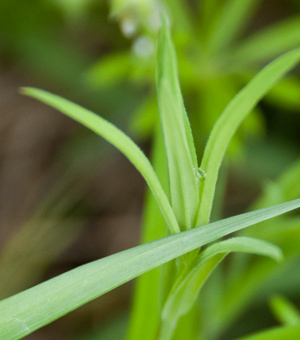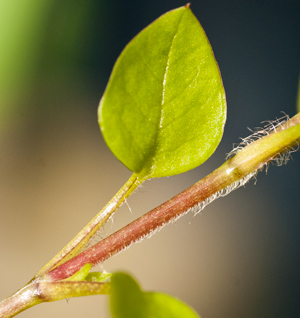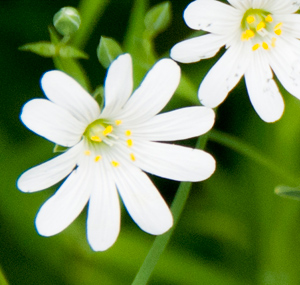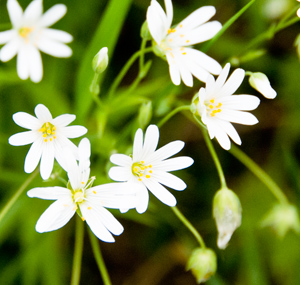Stitchworts and chickweeds
Leaves and stem

The leaves of the greater stitchwort are narrow and 'spear or grass like', and carried on weak, 'brittle' stems- see left hand image.
The leaves of the common chickweed are broader in relation to their length (see image below), have stalks and the stem has a line of hairs along it . Both stitchwort and chickweed belong to the genus - Stellaria, which belongs to the same family as the Pinks : the Caryophyllaceae.

Flowers and Fruits

Stitchworts and chickweeds have notched petals. The five petals are a 'crisp' white - and deeply divided. Clumps of greater stitchwort (Stellaria holostea) can form an attractive display in a hedge bank or woodland in Spring.The flowers of the stitchworts are larger than those of the chickweeds.
The greater stitchwort flower (shown left) is about 1.5 to 3 cm in diameter, whereas that of the chickweed is less than 1 cm.
Flowering in the Greater Stitchwort may occur between March and June, whereas the common chickweed may be found in flower for a much longer period - it is possibly our commonest weed. The green sepals of the common chickweed are downy / hairy.
Ecology and other notes

The flowers of the greater stitchwort (Stellaria holostea) may be found in hedgerows and woodlands in early Spring, where they may form an attractive display. Their petals are deeply 'divided'.
The common chickweed (Stellaria media) is an opportunistic 'weed' and can be found growing almost anywhere - fields, gardens and disturbed ground, and anytime ! Its sprawling habit can result in dense mats of foliage, much to the annoyance of gardeners.
